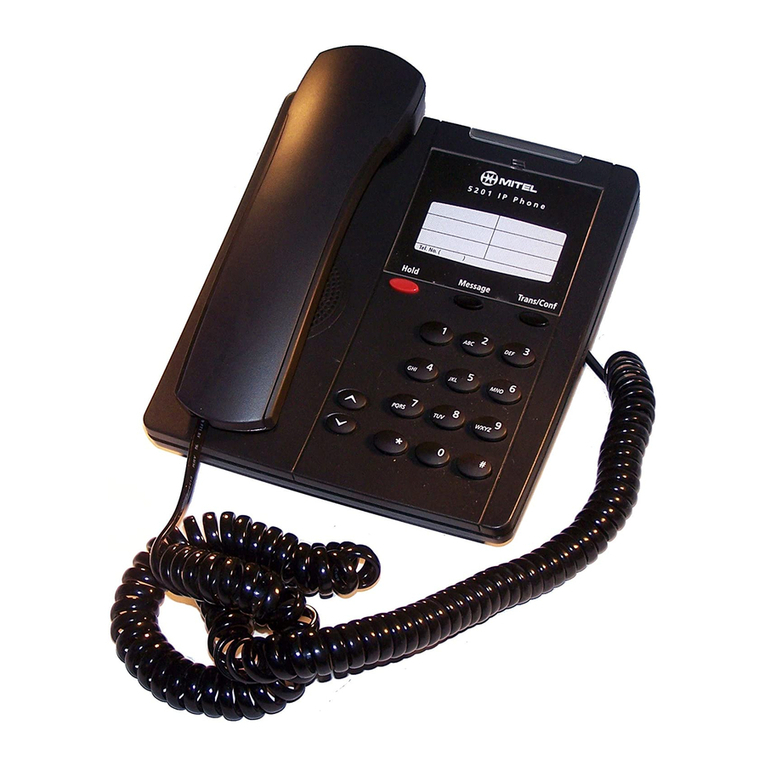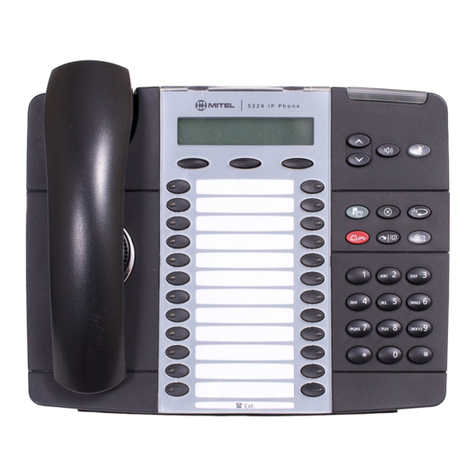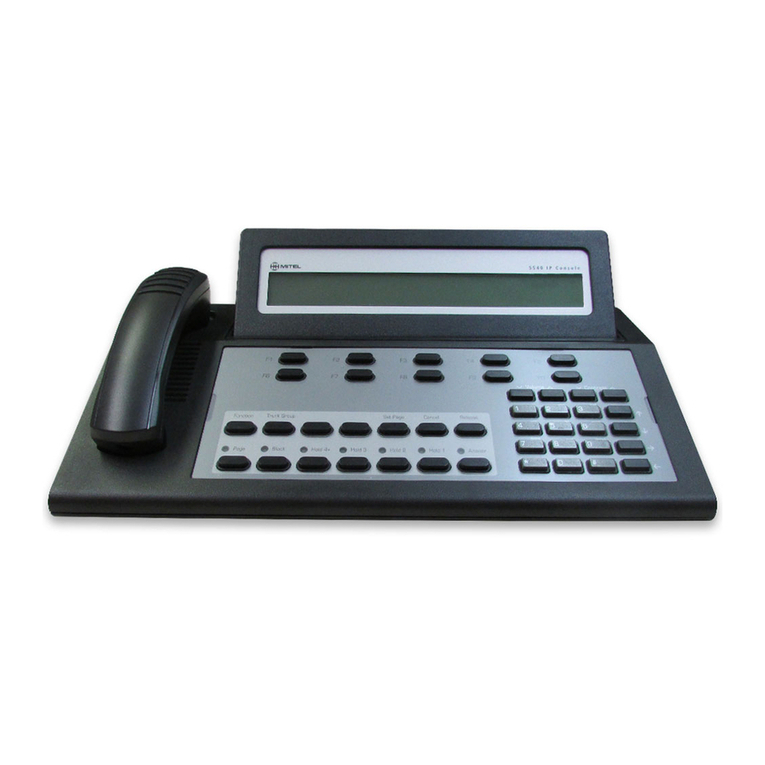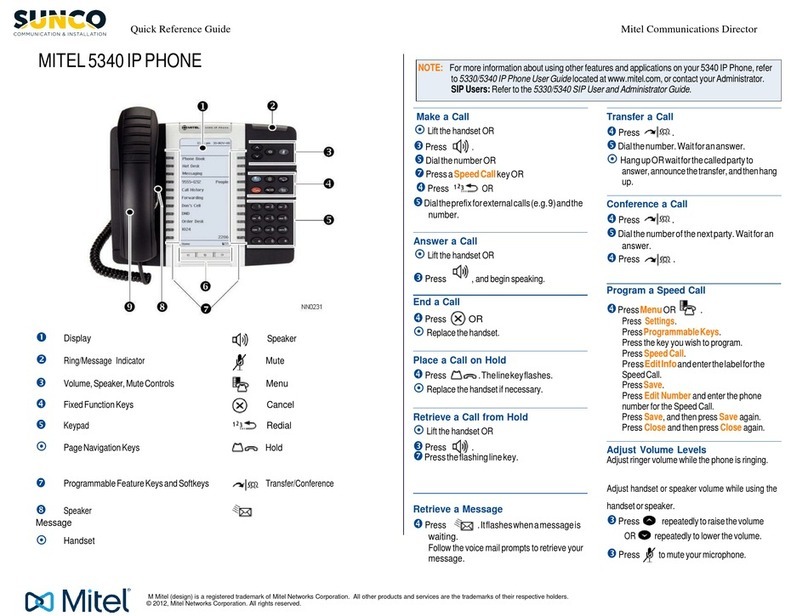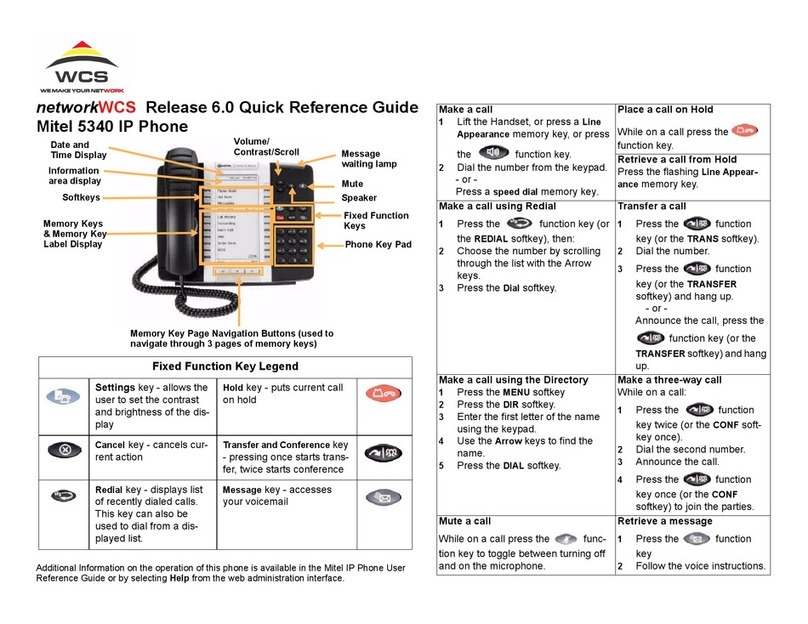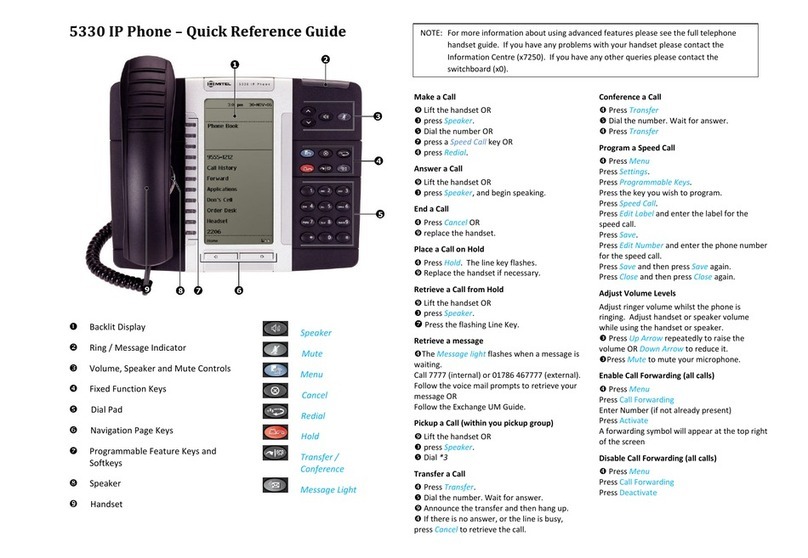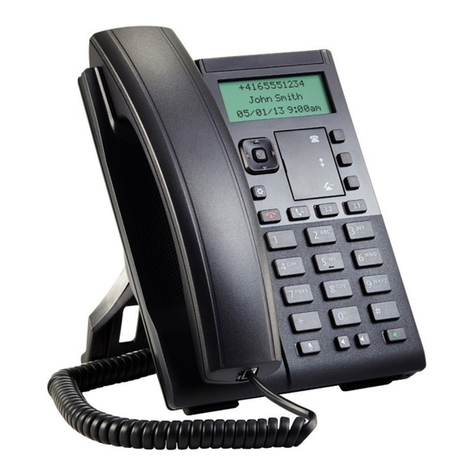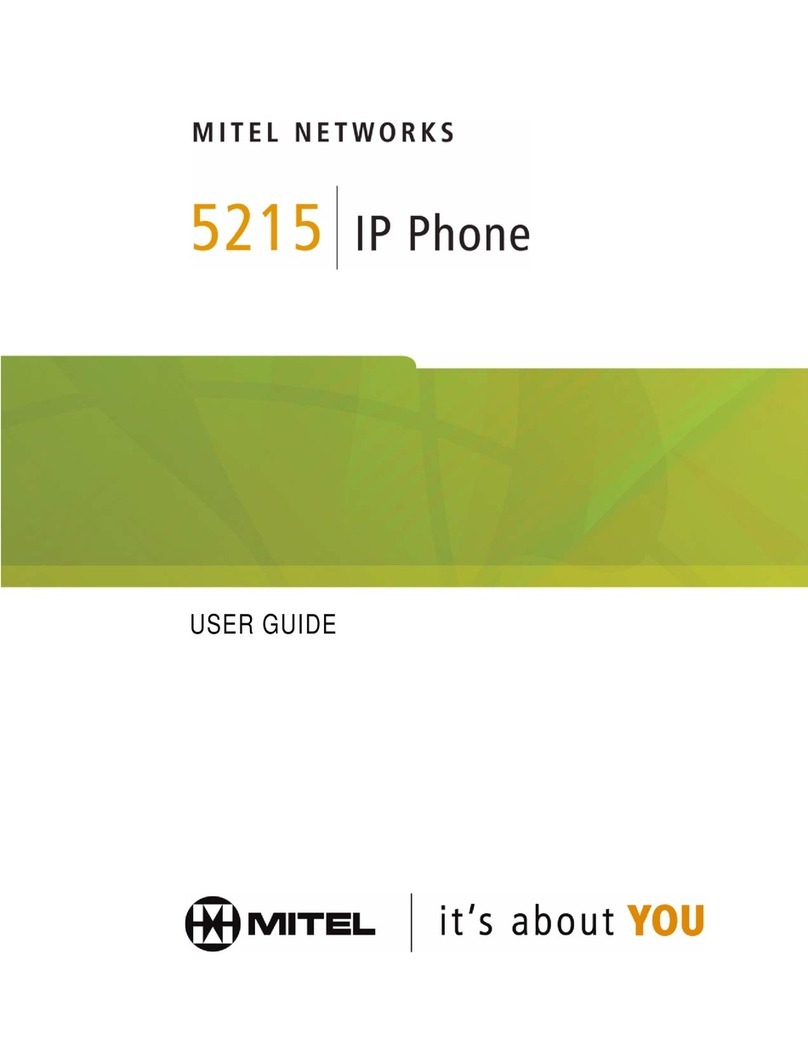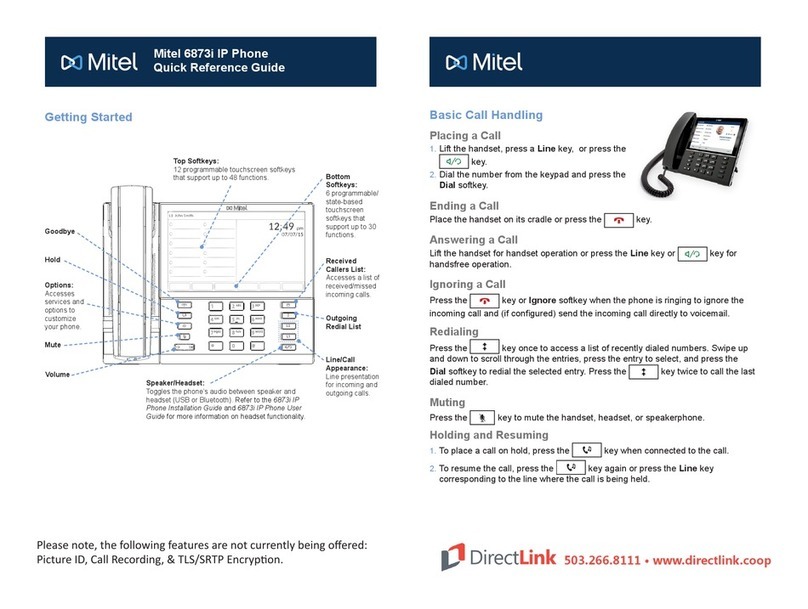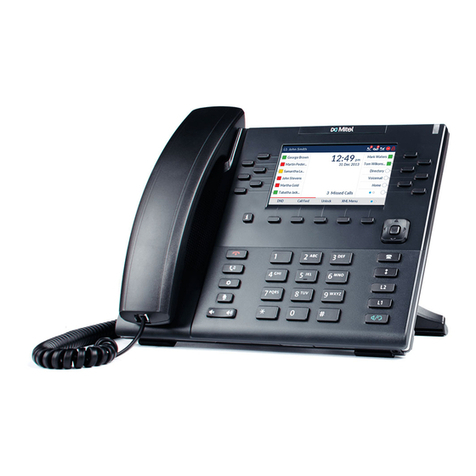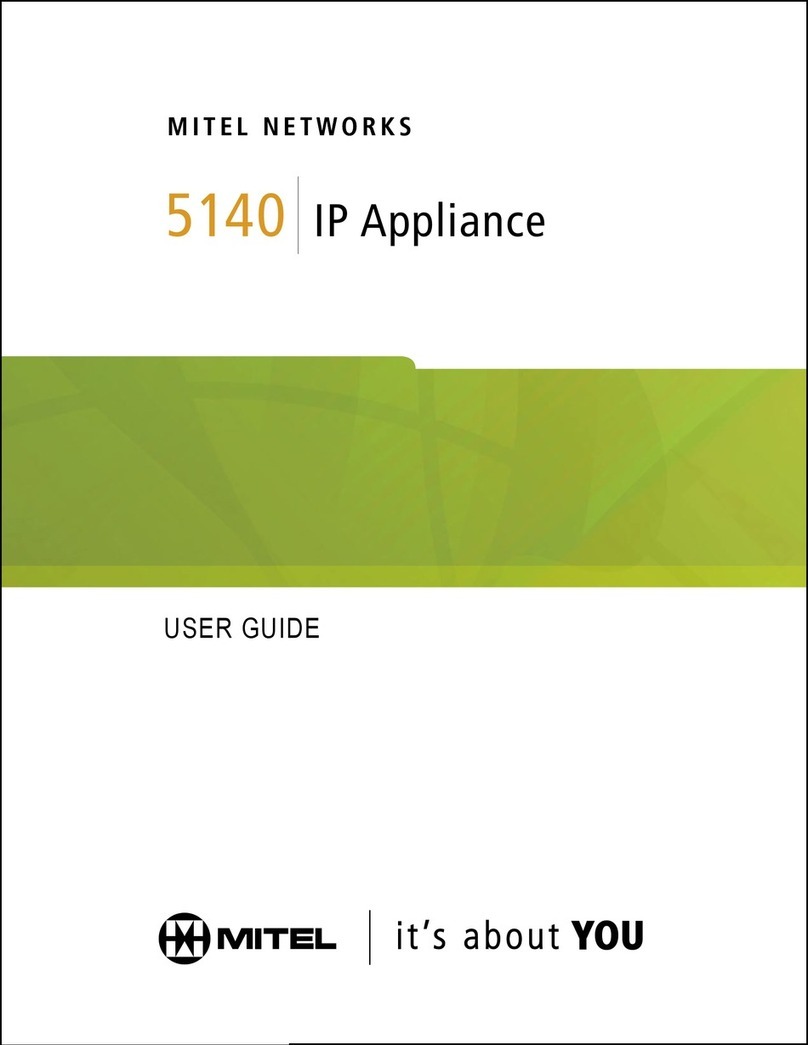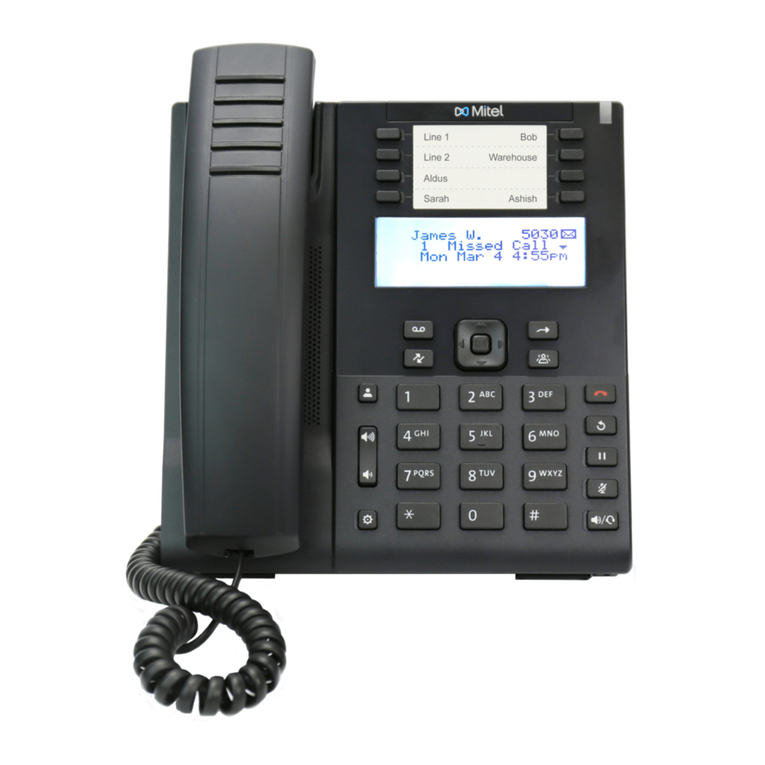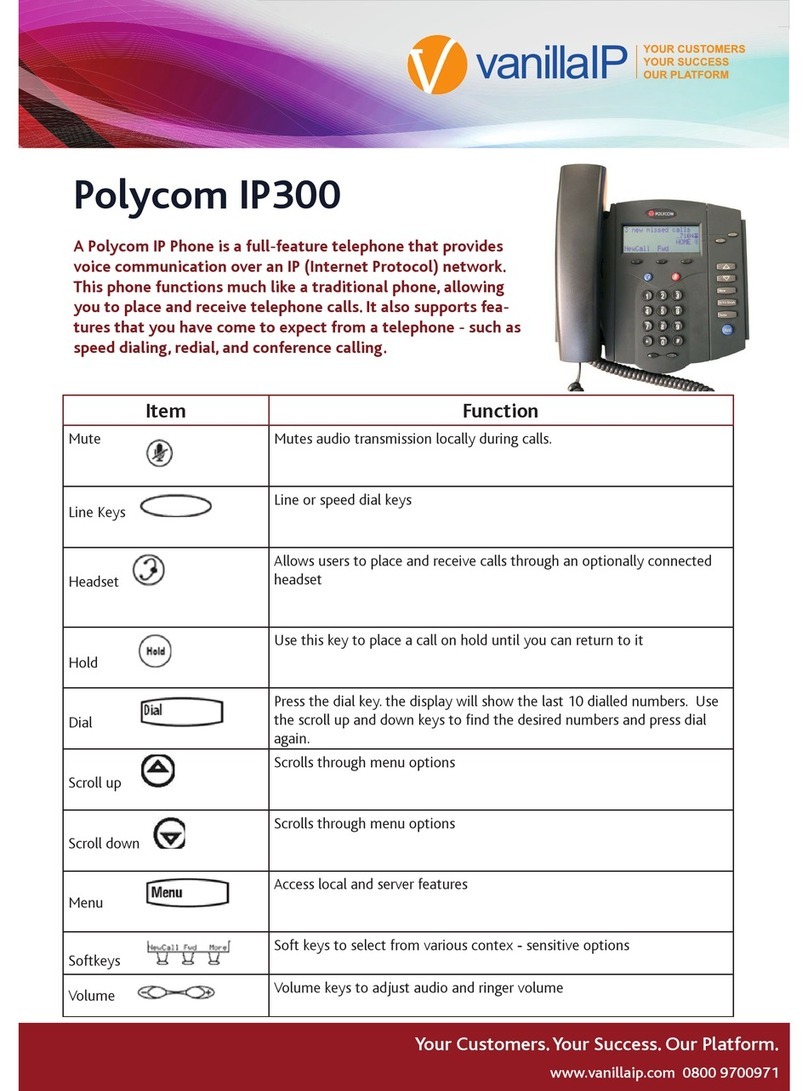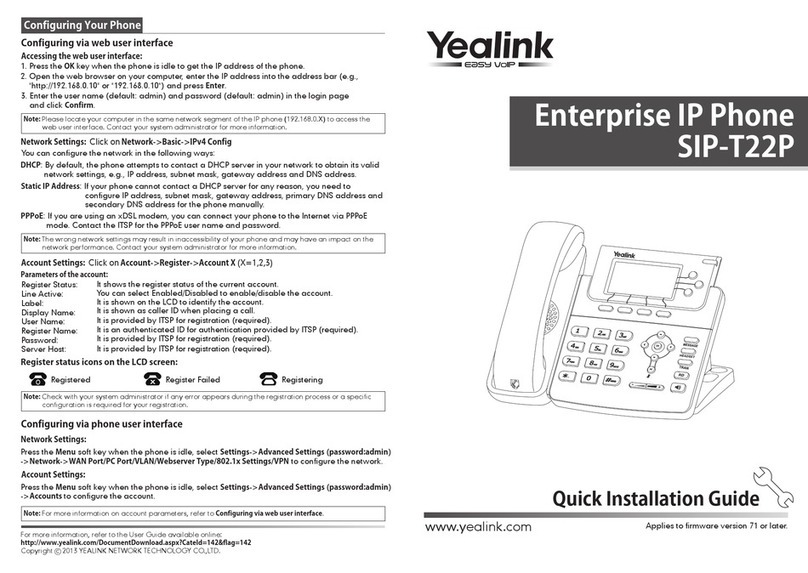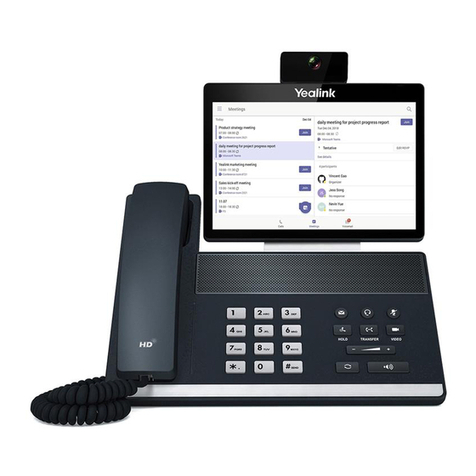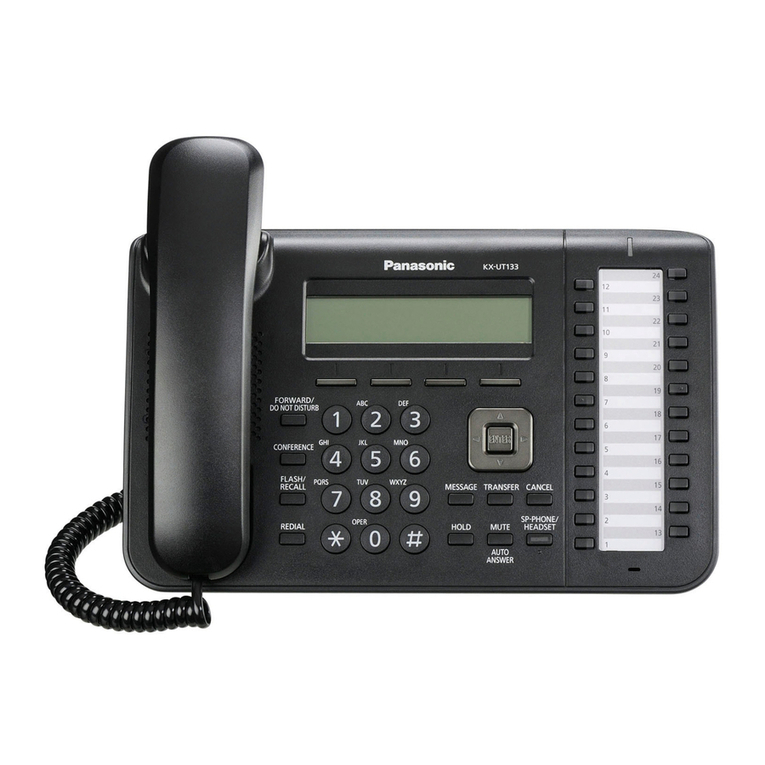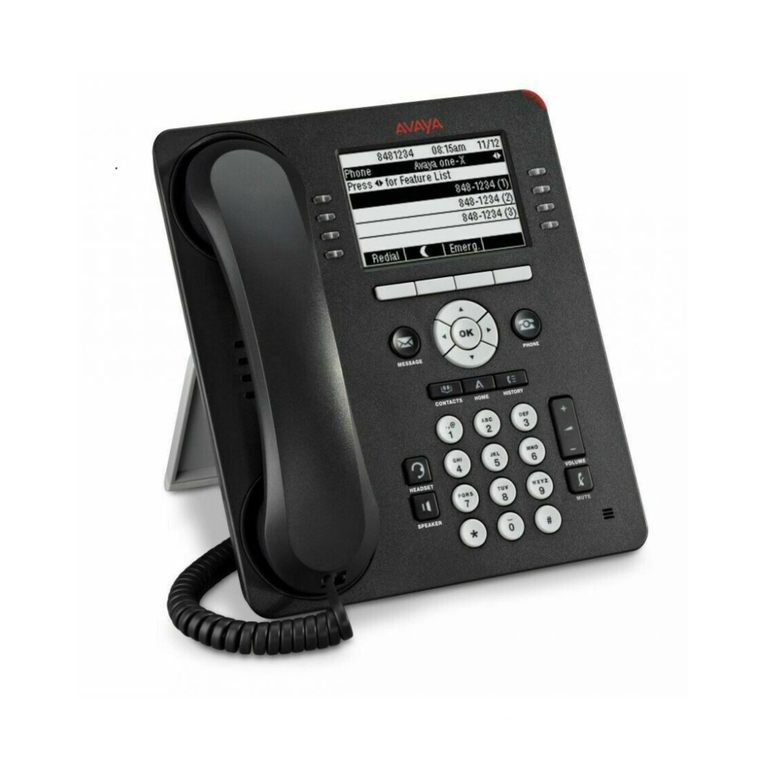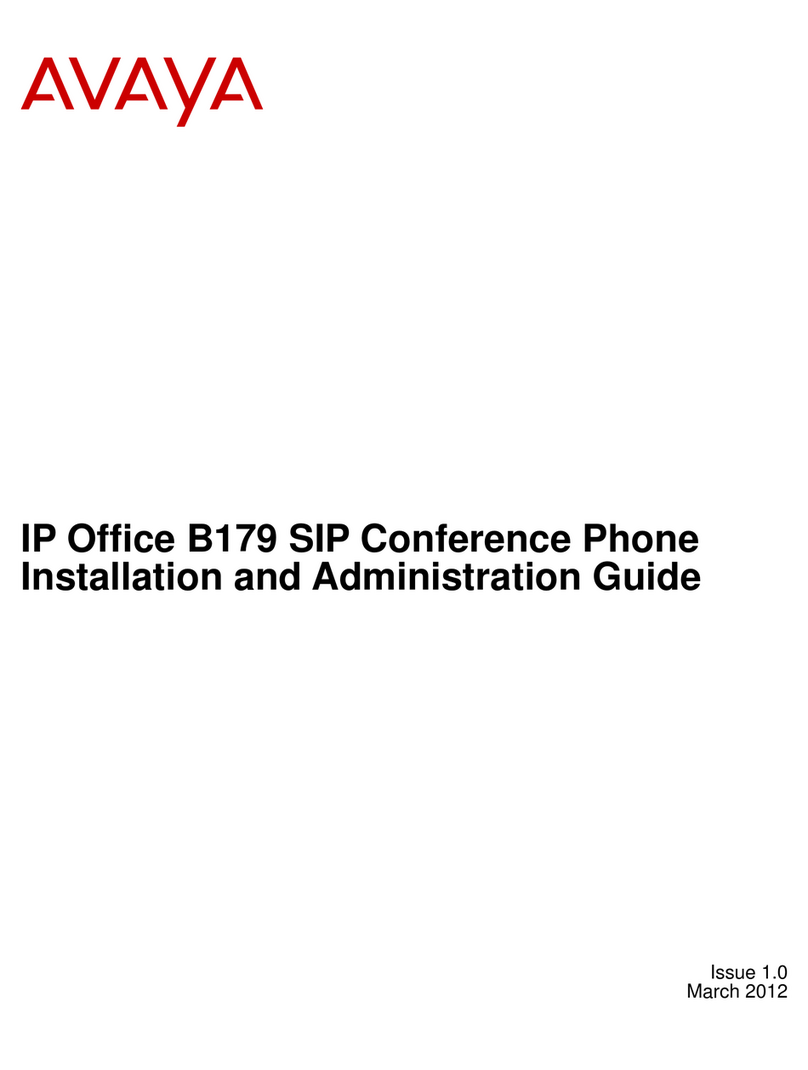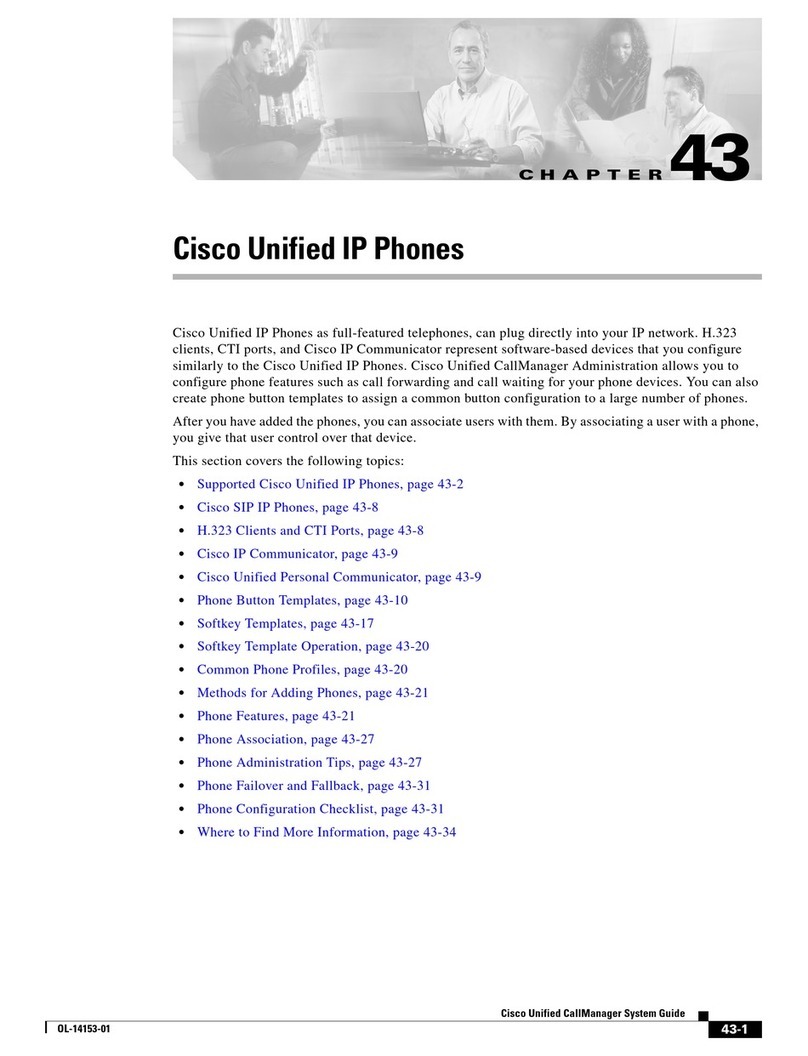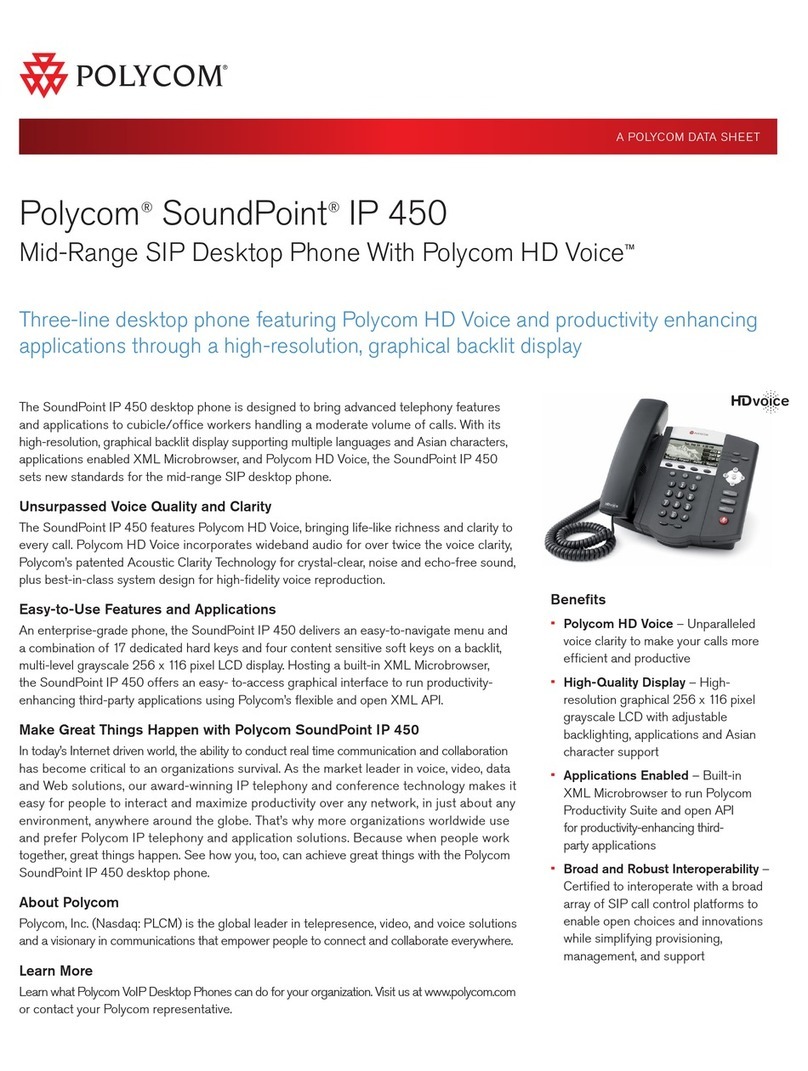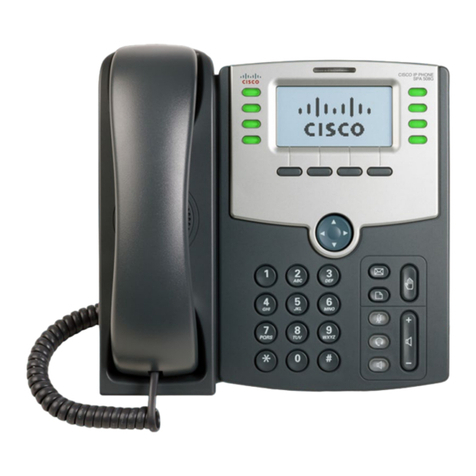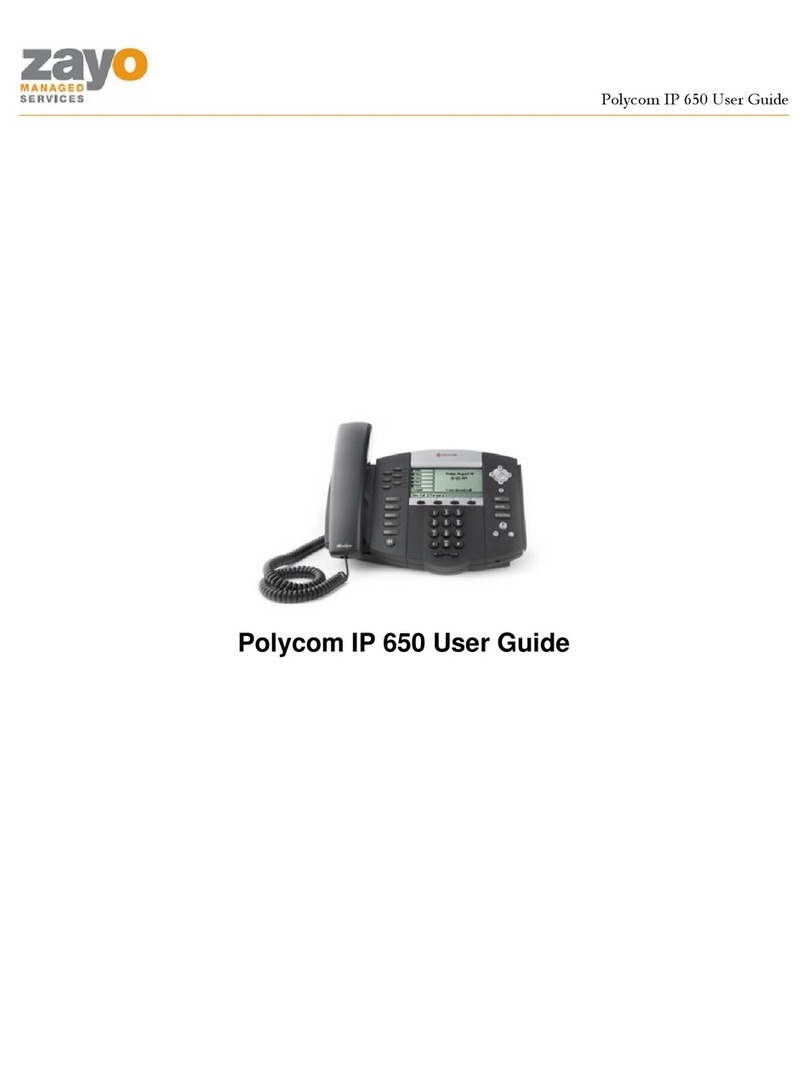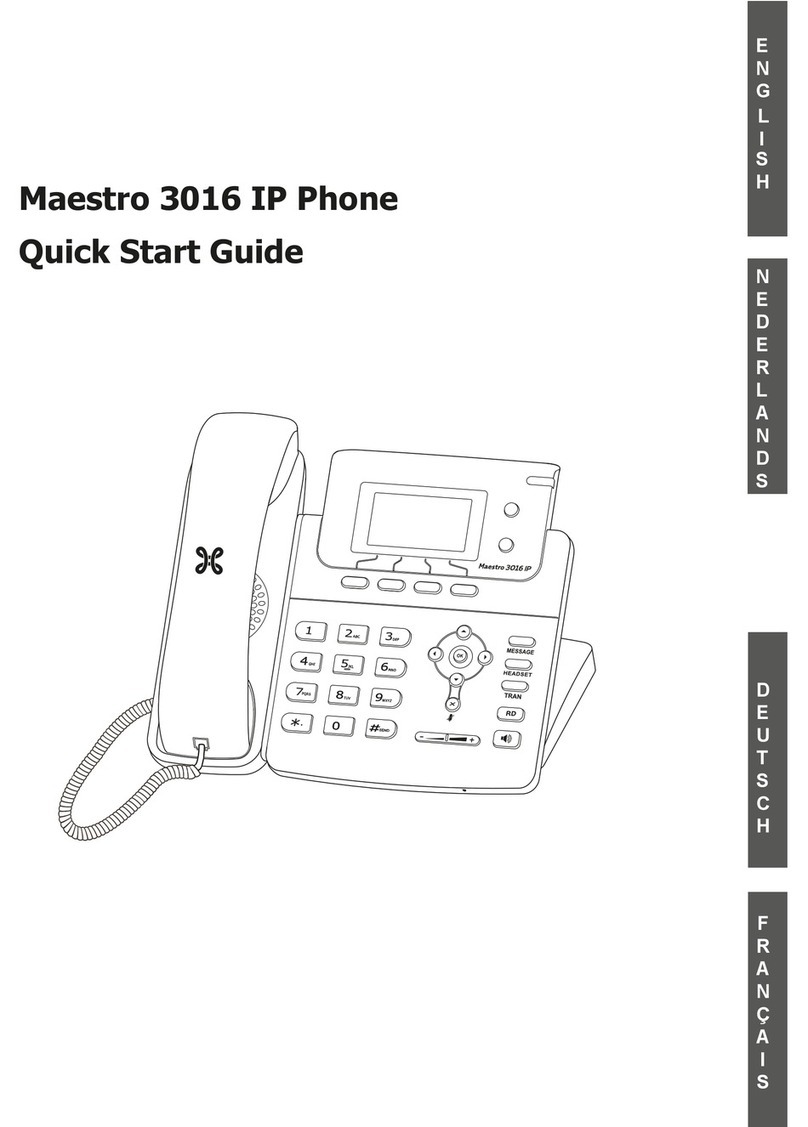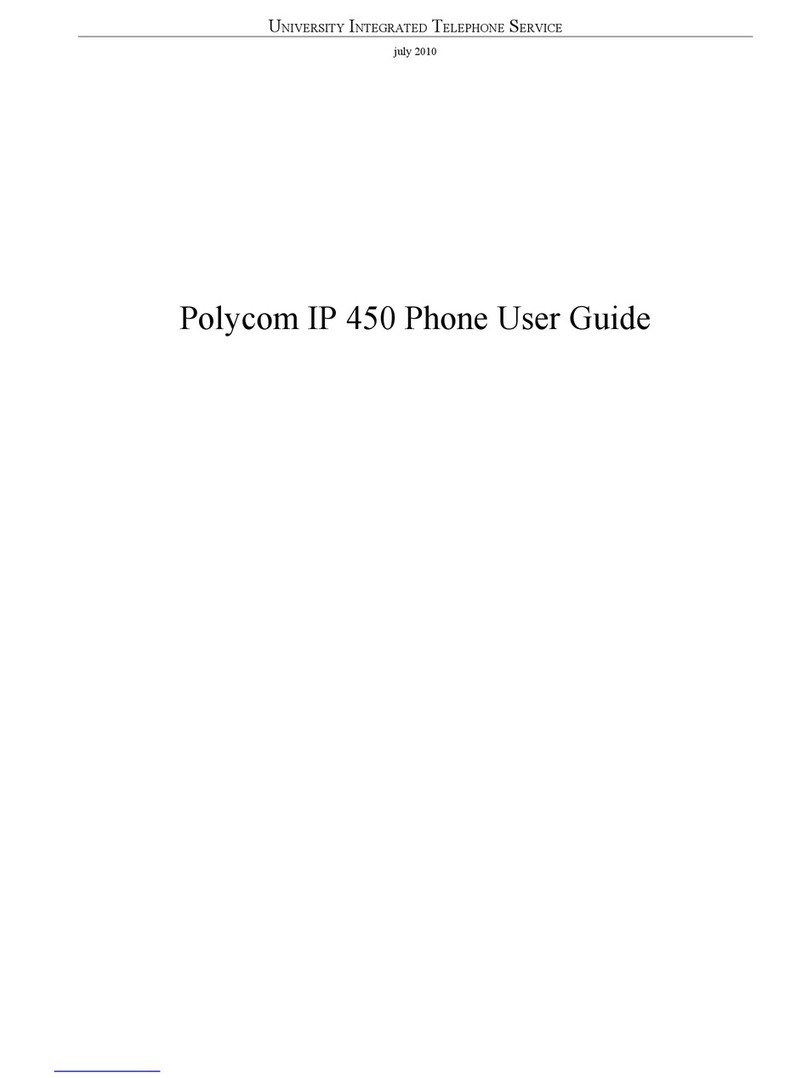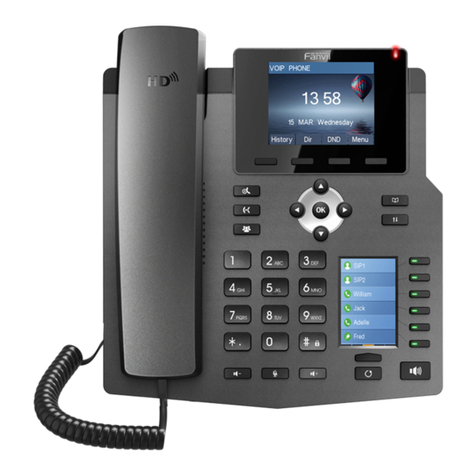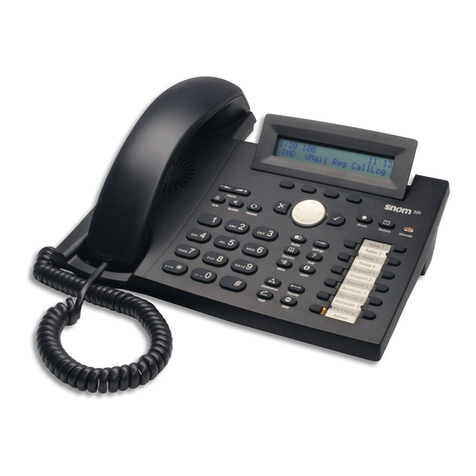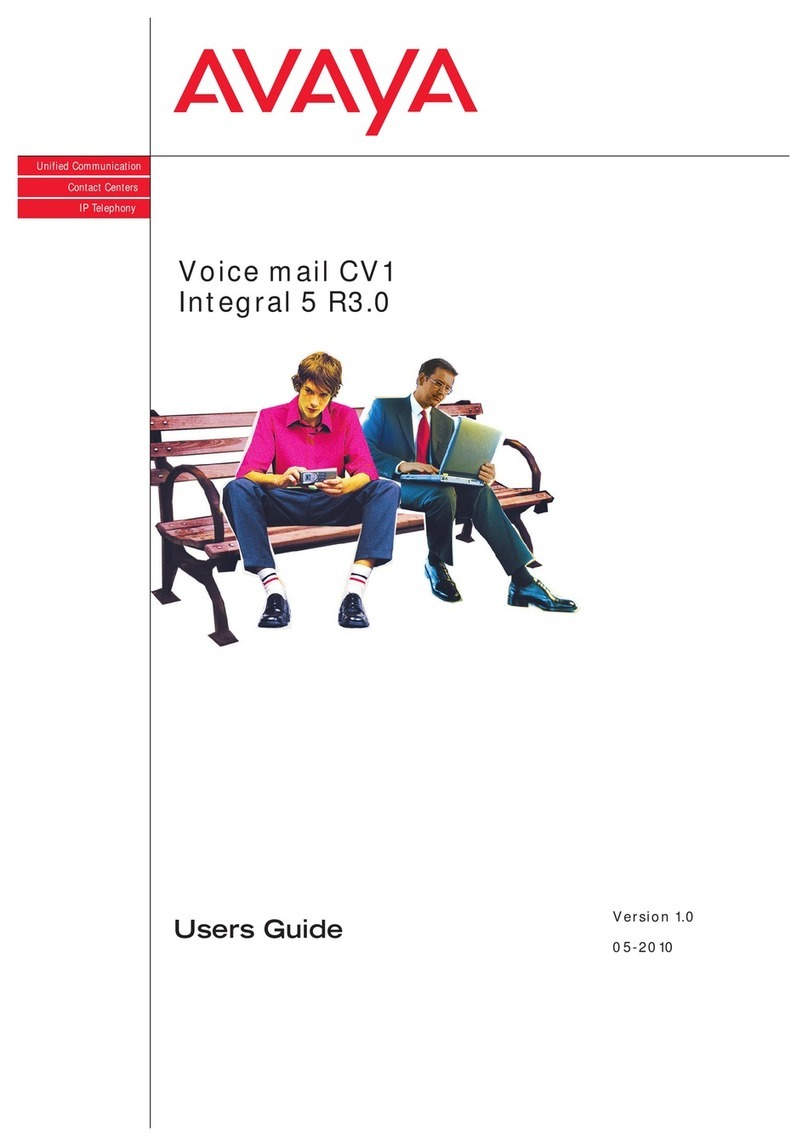Mitel 1000 – DECT Phone Quick Start Guide
LR2770.06230-2
BATTERIES
• There is a risk of Explosion if the battery is replaced by an incorrect type. Never use non-rechargeable batteries. Use two rechargeable NiMH
batteries size AAA 1.2V 750mAh (HR10/44) only. NiMH batteries must be disposed of in accordance with the applicable waste disposal
regulations.
• Do not dispose of the battery in a fire, as they can explode.
• Do not open or mutilate the battery. Released electrolyte is corrosive and can cause damage to the eyes or skin. It can be toxic if swallowed.
• Avoid contact with metal objects when handling the battery. These objects could short out the batteries or cause the conductor to overheat
resulting in burns.
• Do not attempt to recharge the battery cell by heating it. Sudden release of battery electrolyte can cause burns or irritation to the eyes or
skin.
• Observer the proper polarity, or direction of any battery. Reverse insertion of the battery cell can result in leakage or explosion.
• Remove the battery cells if you do not plan to use the product for several months at a time.
• Discard any “dead” batteries because they are likely to leak into the product.
• Do not store this product or the battery in a high temperature area. Battery stored in a freezer should be stabilized at room temperature
before using.
• Your battery is rechargeable and can be recycled once it outlives its usefulness. Depending upon your local ands state law, it might be illegal
to dispose of this battery into a municipal waste system. Check with your local solid waste company for more information on your recycling
options for the battery cells.
FCC/IC Information
This equipment has been tested an found to comply with the limits for a class B digital device, pursuant to Part 15 of the FCC rules and
Specification ICES-003 of Industry Canada. Operation is subject to the following two conditions: (1) This device may not cause interference and
(2) This device must accept any interference, including interference that may cause undesired operation of the device. This device complies
also with RSS-213 of Industry Canada.
Notice: The term “IC” before the certification number signifies that Industry Canada technical specifications were met. This certification means
that the equipment meets certain radio communications and operational requirements.
FCC Identifier FCC ID: TOZ-5925 (located in handset battery compartment)
Industry Canada IC Identifier: IC3842A-DT19R26
Radio Interference
This equipment generates, uses and radiates radio frequency energy and, if not installed and used in accordance with the instructions, may
cause harmful interference to radio communications.
However, there is no guarantee that interference will not occur in a particular installation. If this equipment does cause harmful interference
to radio or television reception, which can be determined by turning the equipment off and on, the user is encouraged to try to correct the
interference by one or more of the following measures:
• Reorient or relocate the receiving antenna.
• Increase the separation between the equipment and receiver.
• Connect the equipment into an outlet on a circuit different from that to which the receiver is connected.
• Consult the dealer or an experienced radio/TV technician for help.
RF Radiation Exposure
This equipment complies with FCC RF radiation exposure limits set for an uncontrolled environment. This equipment should be installed and
operated with a minimum distance of 20 cm between the radiator and your body. For body worn operation this phone has been tested and
meets the FCC RF exposure guidelines when used with the belt clip supplied with this product. Use of other accessories may not ensure
compliance with FCC RF exposure guidelines. This transmitter must not be co-located or operating in conjunction with any other antenna or
transmitter.
Modifications
Changes or modifications not expressly approved by the party responsible for compliance could void the user's authority to operate the
equipment. There are no user-serviceable parts or adjustments inside this equipment - please do not open the case.
Caution
Users should ensure for their own protection that the electrical ground connections of the power utility, telephone lines and internal metallic
water pipe system, if present, are connected together. This precaution may be particularly important in rural areas.
Noise
Electrical pulse noise is present at one time or another. This is most intense during electrical storms. Certain kinds of electrical equipment, such
as light dimmers, fluorescent bulbs, motors, fans, etc. Also generate pulse noise. Because radio frequencies are susceptible to this, you may on
occasion hear pulse noise through the receiver. This is usually only a minor annoyance and should not be interpreted as a defect of the unit.
- SAVE THESE INSTRUCTIONS -
